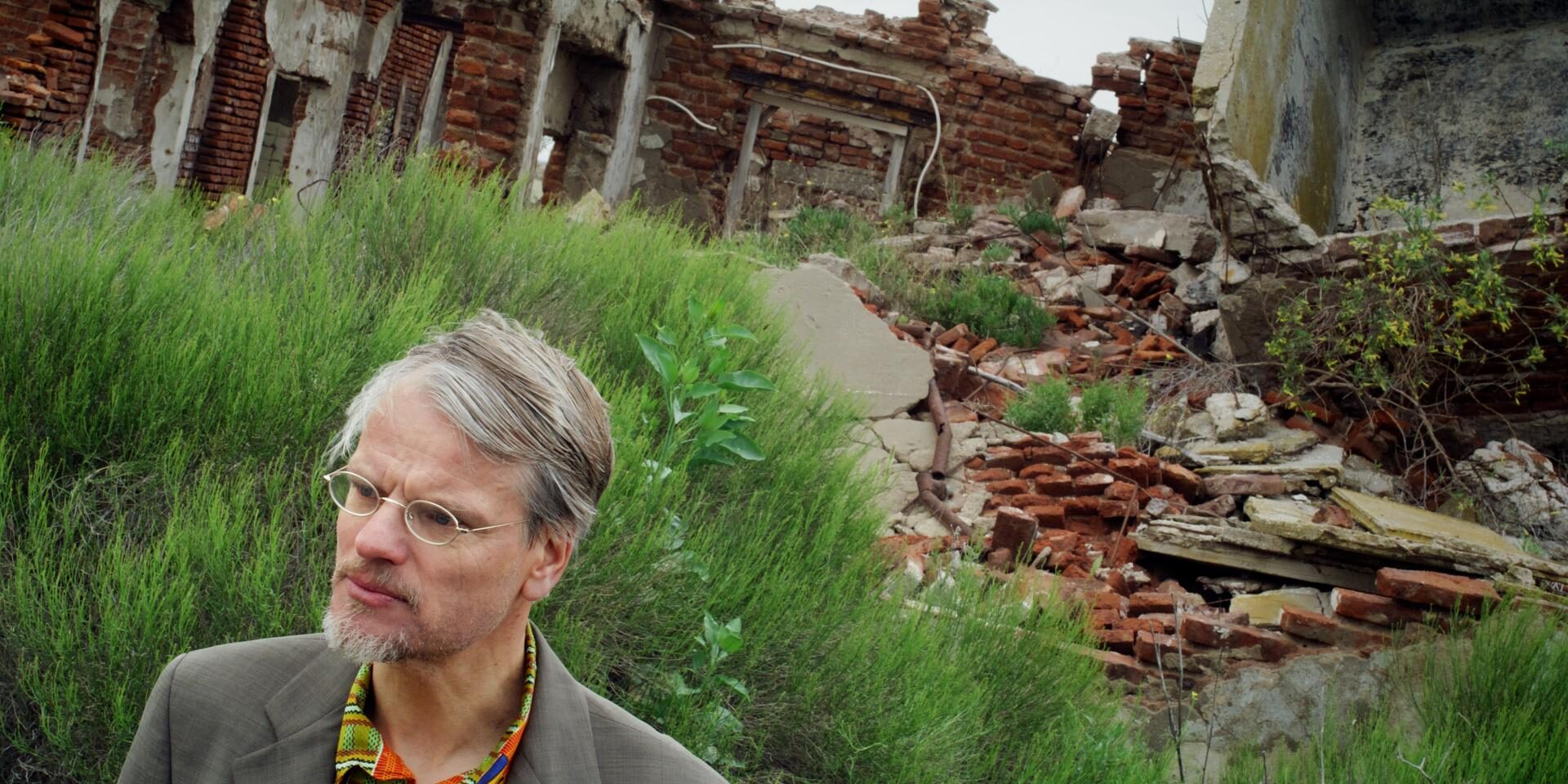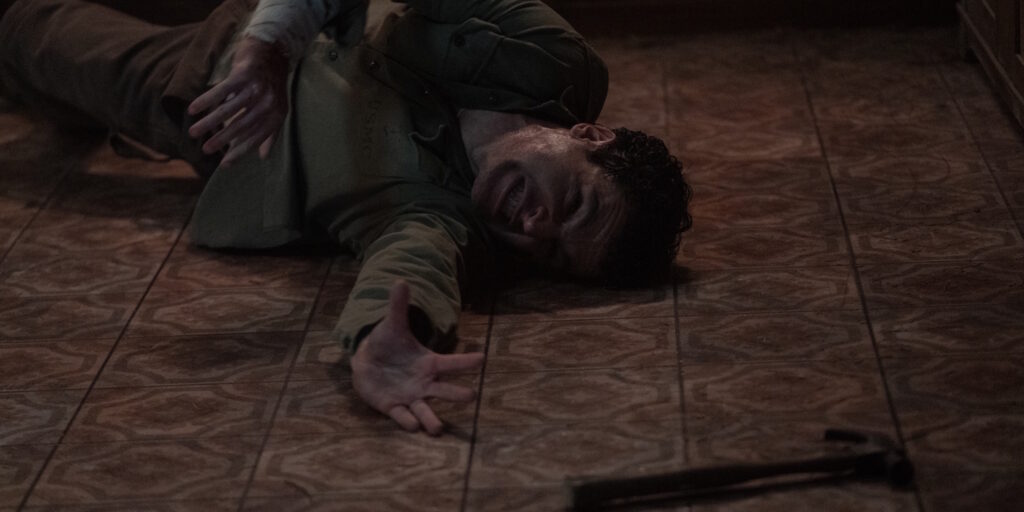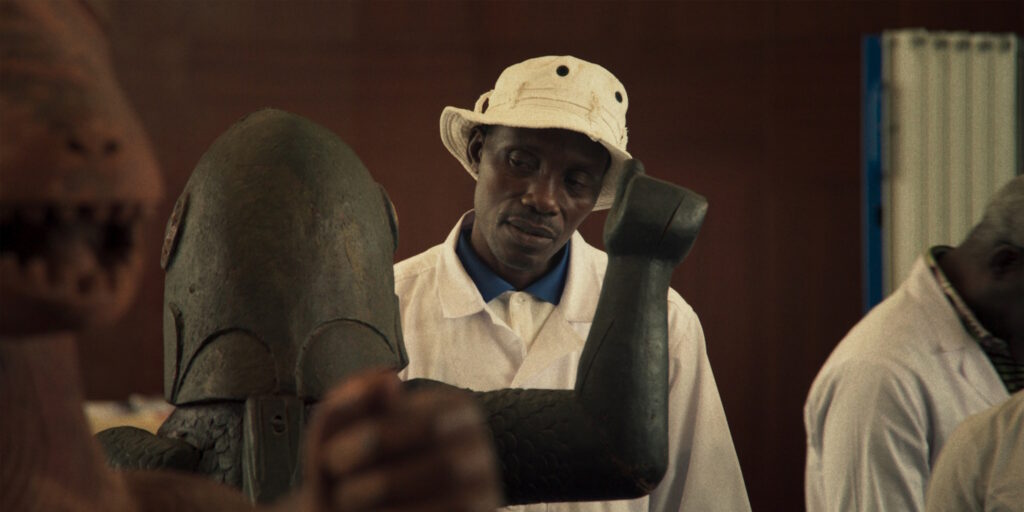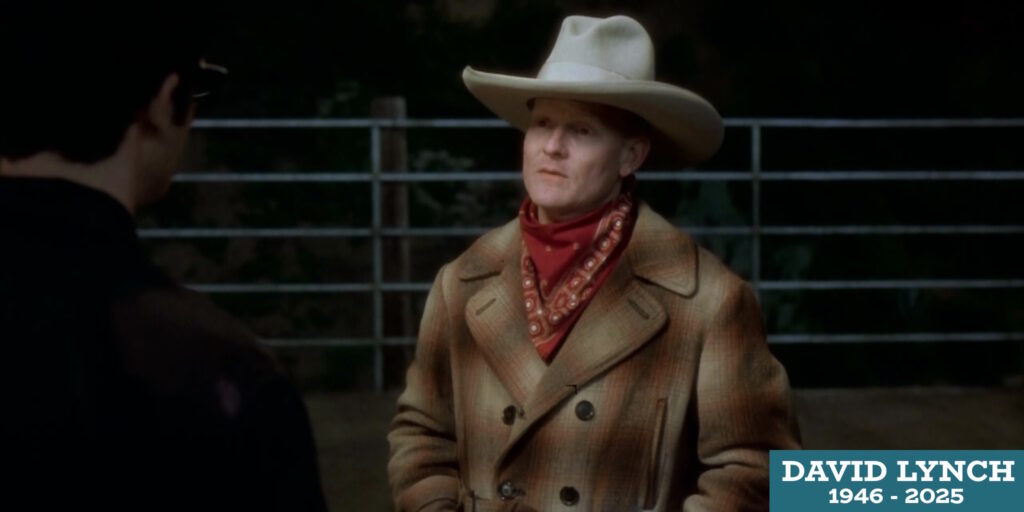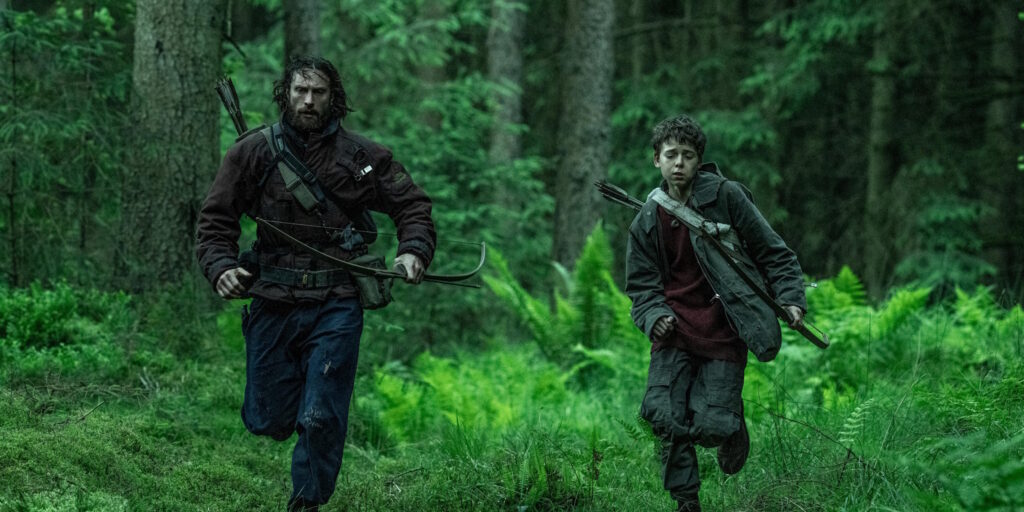[Originally published at Cinema St. Louis’ The Lens.]
As the latest films from James Gray, Jafar Panahi, and Joanna Hogg prepare for their 60th New York Film Festival premieres, the NYFF’s Currents slate continues with its own set of abstract works from new and innovative filmmakers the world over.
While The Lens’ first NYFF dispatch touched on films that grapple with life’s purpose in relation to one’s environment, this second batch — Slaughterhouses of Modernity, Human Flowers of Flesh, and The Adventures of Gigi the Law — wrestles with our planet’s most storied institutions. Whether public or private, municipal or militant, these three films question the establishment with filmic force.
Slaughterhouses of Modernity
Although none of films discussed here could appropriately be labeled “casual viewing,” artist-turned-filmmaker Heinz Emigholz’s Slaughterhouses of Modernity is the one that undoubtedly requires the most attention from the viewer. Consisting of equal parts philosophical, historical, and architectural monologues played over comprehensive audiovisual coverage of unique modernist structures, Emigholz’s newest documentary requires that the viewer carefully heed it in order to fully appreciate it.
Though this is true of almost every film, Emigholz’s distinct style of shooting and editing demands focus, lest the viewer become lost. In making his argument about the unbreakable bond between 20th-century municipal-building architecture and capitalist ideology, Emigholz takes the audience from Europe to Central and South America and back again.
Typically, in films past, Emigholz has relied almost exclusively on static shots of buildings, trusting in his raw footage and ambient soundtracks to do the speaking. The sheer size and scope of Slaughterhouses of Modernity (not to mention its vital message) demanded more, however. Emigholz has always referred to his films as “hard-core documentaries,” but the descriptor feels especially applicable to this cleverly cut, exhaustively researched, intelligently assembled crash course in the failings of 20th-century modernity.
Comparisons to the work of Frederick Wiseman — another documentarian known for his in-depth explorations of every corner of an institution — are understandable, but Slaughterhouses of Modernity illustrates the limitations of such invocations. Emigholz is going for something drastically different here: Contrary to Wiseman, who is more concerned with the relationships and hierarchies within the institutions themselves, Emigholz fixates more on the way manmade structures reflect on or contrast with the function of the structure itself. He also makes a point to discuss which historic buildings get preserved and for what purpose, underlining his thesis about creation and destruction under capitalism.
As writer, director, and narrator, Emigholz is akin to a cinematic tour guide. It is in his editing, however, that the power of his distinctive style shines the brightest. Villa Epecuén, a once-tranquil resort town on the outskirts of Buenos Aires, Argentina, still sits flooded more than 35 years after the deluge from a broken dam inundated the city. Meanwhile, the newly built Humboldt Forum in Berlin, Germany has marshaled the time, money, and resources to reconstruct ornate façades from the Berlin Palace, demolished more than 70 years ago. Through these juxtapositions, Emigholz not only brings attention to the importance of preservation but also seriously challenges the how and why of the act itself.
Human Flowers of Flesh
The slosh of ocean waves against the side of a moored boat. The crunching of feet on a rocky beach. The ambient chatter of a busy outdoor cafe. There’s no real quiet to be found in a life spent at sea, but for Ida (Angeliki Papoulia), these sounds are preferable to the hustle and bustle of morning traffic, the thumping bass of a nearby bar, or the muffled shouts through the shared wall of a neighbor’s apartment. Ida is the only woman in a crew of men living on a modestly sized yacht, and one doesn’t need to know what she does to know that hers is a life worth coveting.
For the record, writer-director-cinematographer Helena Wittmann might not know what Ida does, either. Her film Human Flowers of Flesh is not interested in getting to the bottom of it, either. The specifics are never explicitly stated, nor are they needed. The same goes for the crew with whom she shares the ship. Some are reading, some are journaling, some are making observations, and some are just lying there, listening to the wooden ship creak. It’s paradise. It’s also vaguely purgatorial.
Consistent with this ambiguous setup, there is no plot to speak of in the film. Viewers will not miss it, so long as they can convince themselves to relax and let the film wash over them. Human Flowers of Flesh is a languid, feature-length backstroke, requiring the viewer to breathe easy, unconcerned about where they are headed. Who cares about diegesis when elements such as rhythm and montage are so overwhelming?
That’s not all that’s happening here, however. Off the coast of Marseille, something catches Ida’s attention. Initially mentioned in fleeting conversations, the French Foreign Legion soon comes fully into the picture. Ida is transfixed by the rituals and routines of the 1st Foreign Regiment, a French Army corps headquartered in Aubagne, a suburb not far from Marseille. The way they move, the way they chant, the way they interact: She is mesmerized and obsessed.
There comes a moment in Human Flowers of Flesh where those up on the pillars of contemporary French arthouse cinema will be on their feet with the kind of astonished elation a fan of comic-book movies would experience at the arrival of some obscure character in the background of a CGI-laden boss battle. Despite this revelatory cameo, Wittmann’s film is not here to serve as a sequel, a spinoff, a follow-up, or a remake. It is, rather, a way for the filmmaker to highlight the foreboding presence of the French Army, examine the loss of the self under militaristic discipline, and probe the very nature of male-dominated fields.
The Adventures of Gigi the Law
The cringe-worthy cop who’s no good at their job is well-trodden territory on the big screen, dating back at the very least to 1912 with the silent slapstick comedy troupe the Keystone Kops and running through the likes of Chief Wiggum and Paul Blart. Nevertheless, the character archetype endures, in part because the police as an institution are always in need of a sharp collective critique. Instead of aiming for the top, however, Alessandro Comodin’s documentary The Adventures of Gigi the Law targets the lower ranks of the law-enforcement establishment: Pier Luigi Mecchia, aka Gigi, a police officer in the suburbs of Venice, Italy.
The audience’s introduction to Gigi says nothing of his profession but everything about his personality: indignant, dogmatic, unwavering. His neighbor, hidden offscreen behind the overgrown greenery in Gigi’s yard, begs him to do something about the foliage encroaching on his property. Gigi not only refuses, he resorts to insults and name-calling. Cut to him at the wheel of a squad car, looking unbothered in his baby-blue uniform. This is the friendly neighborhood lawman who protects and serves the people of San Michele al Tagliamento.
Recently, a string of suicides has plagued this rural town. Specifically, several individuals have thrown themselves in front of passing trains barreling down the tracks that cut through the idyllic countryside. Gigi and his partner — one of many he’s paired with throughout the film — have just learned of another, and they head over to investigate. It’s not a problem one would expect to find in a place as seemingly problem-free as suburban Italy. The Adventures of Gigi the Law unfolds in a series of loosely connected vignettes, tracking Gigi’s dawdling proceedings as the region’s preeminent goofball-in-charge.
Although The Adventures of Gigi the Law does not purport to take down (or even comment on) any larger, nationwide issues with policing — the film is entirely observational, more often than not employing a static camera — the scathing critique is there for those who are attuned to it. Gigi does nothing to help prevent the suicide epidemic, nor does he make any real headway on other pressing cases. He can’t even bring meaningful change to his own yard. Calls for him to perform his duty at work and trim back his jungle of a lawn at home echo similar pleas to reduce funding for police forces across America.
Despite how it might sound, Alessandro Comodin — as it happens, the nephew of Pier Luigi — has not turned in a 100-minute takedown of his subject. Gigi is funny, and Comodin knows it. Even so, he is not a laughingstock. There’s nothing mean-spirited going on in this film. (Truthfully, Comodin might’ve even gone a little easy on the guy.) At its core, The Adventures of Gigi the Law is a beautifully observed portrait of a sad, lonely man blissfully unaware of the depths of his own sadness and loneliness. It’s an aching, melancholic slice of life, even if Gigi always has a smile on his face.
